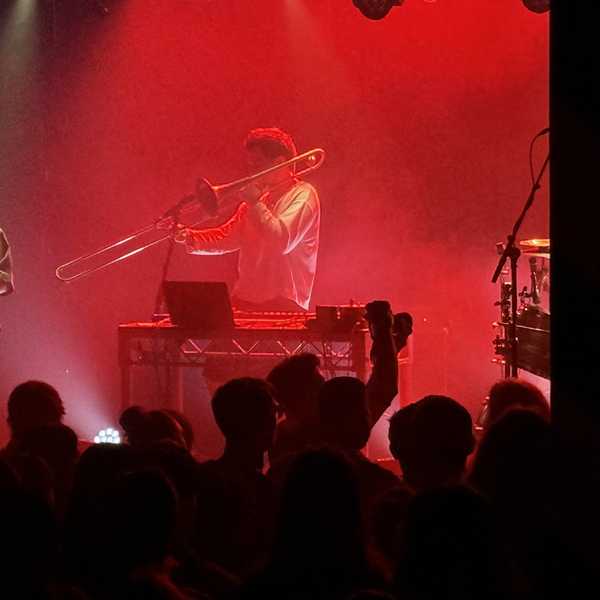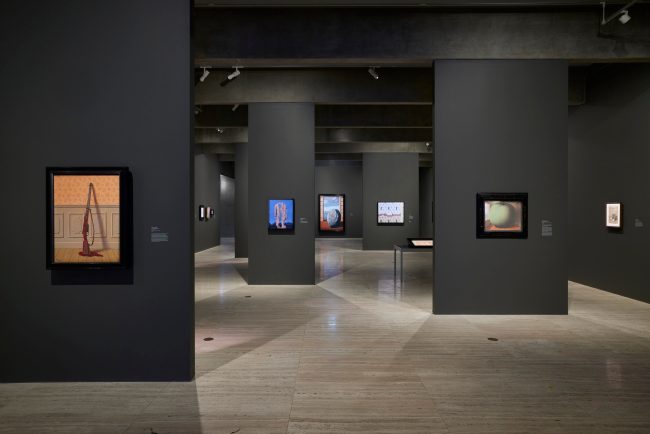
26 OCTOBER 2024 – 9 FEBRUARY 2025
Naala Nura (South Building)
Lower level 2
Review by: Anthony Frater (Arts Wednesday)
Every now and again a blockbuster exhibition comes along and lives up to the hype. Magritte, on now at the AGNSW is an extraordinary exhibition. A comprehensive retrospective showcasing many of the artists most iconic well known works; images where ideas and meaning expand over time and live on today, not just in the work themselves but have gone on to have a profound influence on 21st century visual culture.
René Magritte (b. 21 Nov 1898; d.15 Aug 1967) was a Belgian painter. Along with famed artists, Dali, Ernst and Miró he was one of the leading lights of Surrealist painting. These days there is little that hasn’t already been written about him, nonetheless, from 1916 -18 he studied fine art at the Académie Royale des Beaux-Arts in Brussels. Upon graduation he experimented with cubist and futurist styles but he turned to surrealism at around 1925. His oeuvre employed many different painting styles and techniques: recurring motifs such as hats, clouds and smoking pipes; painting styles such as Impressionist, Futurist, Cubist, Fauvist, even Neo-Classicism to name some but it was a photo-graphic realism, the way he applied his materials, like the other surrealists, that became a meaningful trademark: juxtaposing a realistic painting style with absurd objects and situations making the absurd somehow seem normal, or more real.
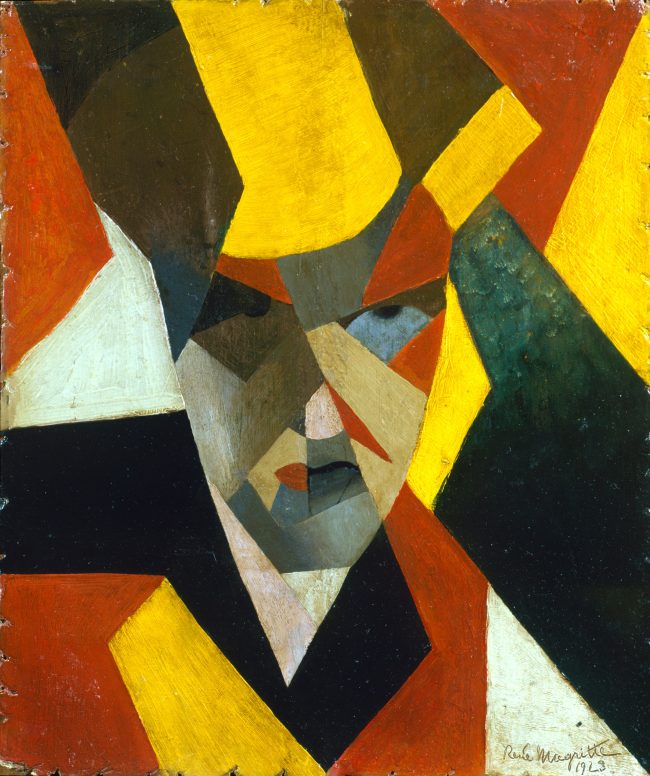
Unlike other surrealists Magritte was not as concerned with dreams, hallucinations and nightmares: melting clocks or biomorphed creatures or the super natural, or for that matter the hypnotising technique of automatism. Magritte was more interested in the mysteries inherent to real life and how the human psyche develops a scheme of behaviours and observations that we use to interpret our world. It’s worth noting at this point that the surrealist movement was heavily influenced by the then new psychoanalytical theories of Sigmund Freud – particularly his dream analyses. Like others, Magritte fell out, then fell in, and then out again with André Breton who wrote the surrealist manifesto in 1924 – surrealism was seen by some as more of a literary movement back then. Breton was a prominent, maybe even a dominant figure but Magritte an innovator and grand artist himself did not seem to be affected personally or professionally by the whims or demands of adherence to prescribed literary doctrine.
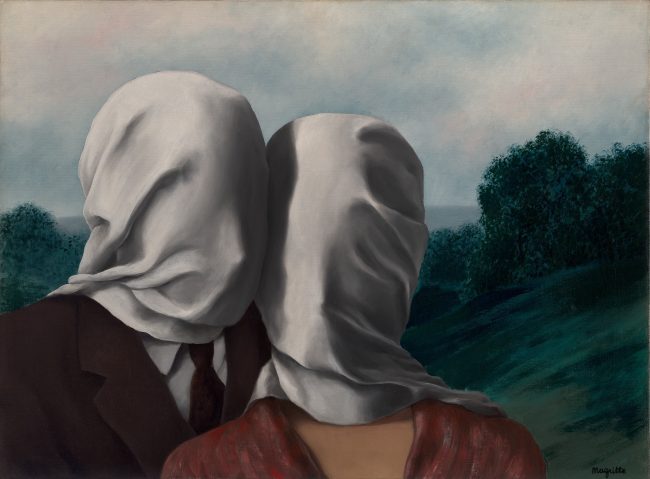
The exhibition features 6 rooms, or chapters, each named after a Magritte painting. Arranged chronologically it gives the viewer a strong sense of how the artist’s work evolved – from his early cubist/futurist styles to the strange and mysterious surrealist works of his later years. It doesn’t take long to become mesmerised by what we see, the feeling builds as we move from one room to the next until we reach the the fifth chapter, Le monde invisble. At this point we feel we’ve reached a sort of critical mass, it’s almost like we have walked into a huge surrealist painting, we feel like we are part of a painting, and paintings within paintings is one of Magritte’s favoured techniques – layers of meaning that of course reflect how life truly is, like the seven veils, as each veil is peeled back we find that there is more to the story.
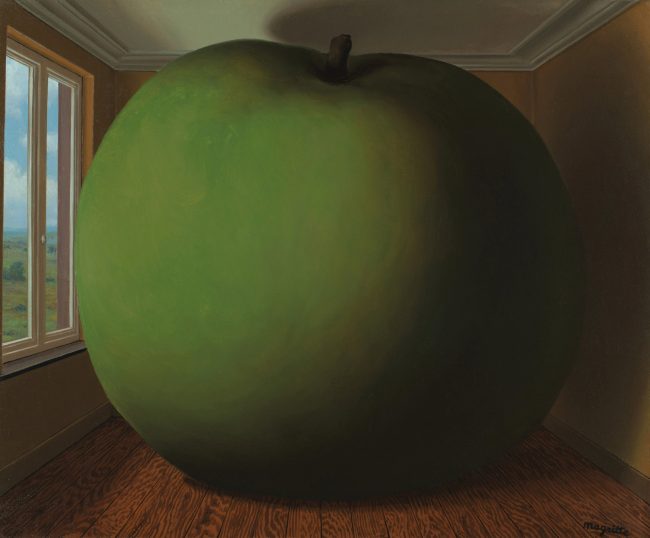
It is undoubtedly the highlight: dimly lit to give us a strong sense of intimacy with the works on display. Each painting incandescent under directional lighting that accentuates an almost eerie iconic presence amidst the gloom. Upon entering we are arrested by a series of charcoal grey floor to ceiling vertical panels, each with paintings mounted on both sides. The panels recede giving the room a sense of depth, a long cone shaped perspective, at it’s zenith hangs Le monde invisible. The room houses some of Magritte’s most iconic later works. To catch our eye first and in the foreground is The listening room: a green apple taking up the space of a whole room, almost pushing up against the walls even threatening to grow outside of the picture frame, there is a sense of suffocation, a device to create tension perhaps – think also here The Beatle’s Apple Records logo. Our gaze then shifts to the middle ground and there is Pascal’s coat, and here we can see where French/Italian Sculptor Bruno Catalano may have got his inspiration for his “monumentales” series of sculptures, the missing pieces of the man and his coat symbolic of man’s ultimate demise – disappearing man. Still in the middle groundand there is Golconda (Golconde): are the 100 or so bowler hatted and suited men (Magritte’s alter ego) in an ascension or a fall? Perhaps just stationary, along side Pascal’s coat it could be further comment on mankind’s fated fall; and then to the back wall Le monde invisible: an incongruous scene that features a large boulder placed in a room in front of an open window, the view from the window is that of a big azure blue sky blending into what seems like the sea, the rock seems timeless, dependable, silent, permanent, waiting patiently, it’s almost like it might speak at any moment. How did it get there and why is it there? It replaces what might otherwise normally be a person seated admiring the view, but instead it’s a boulder, inanimate and immovable.
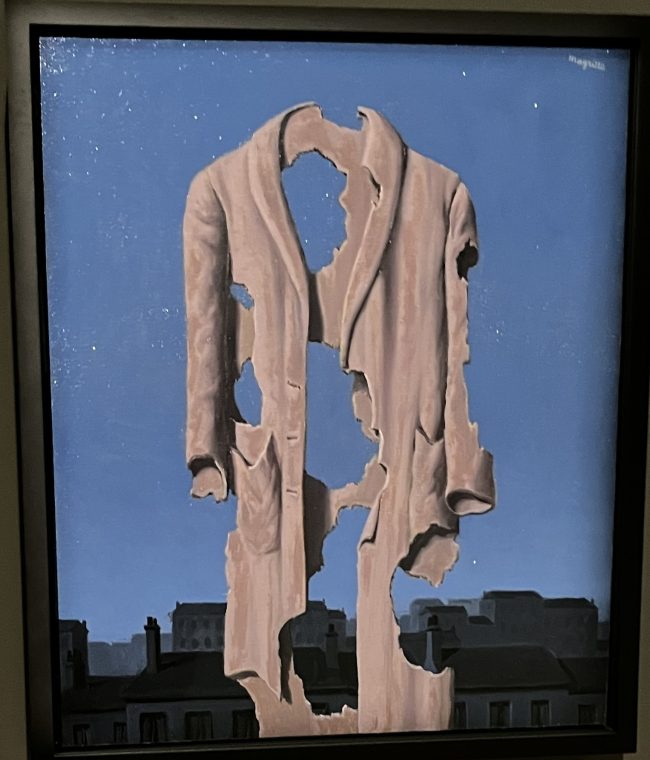
Magritte is at once a philosopher pondering life’s difficult but by the same token fundamental questions. Conversely in another he seeks to undermine and thus question what is considered normal, juxtaposing what we call normal everyday things, absurd things, even people, in paradoxical or incongruous situations, strange situations in order to perhaps show us that ‘normal’ comes in many guises – it all shares and inhabits the same space and breathes the same air, it provokes “questions about the nature and boundaries of reality and representation, image and language”. He attempts to bring together our inside and outside worlds, blends them, and again is this what might have influenced the work of English writer and speaker and self styled philosopher, perhaps even guru, Alan Watts.
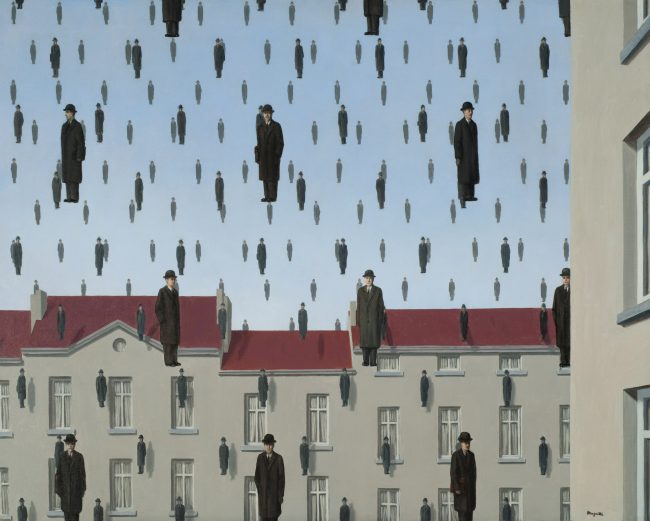
The exhibition was pulled together by the gallery from scratch. The first seeds were sown in 2018. Since then the exhibition, that includes in excess of 100 works and objects, has been brought to fruition by the gallery’s team of curatorial professionals with Senior Curator of Modern Art and Contemporary Art, Nicholas Chambers, leading the way – an incredible feat, and aren’t we grateful. Works have been gathered from private lenders and institutions from around the world. This is a must see exhibition for anyone interested in visual art, particularly for those interested in modern art, specifically, Surrealist art.
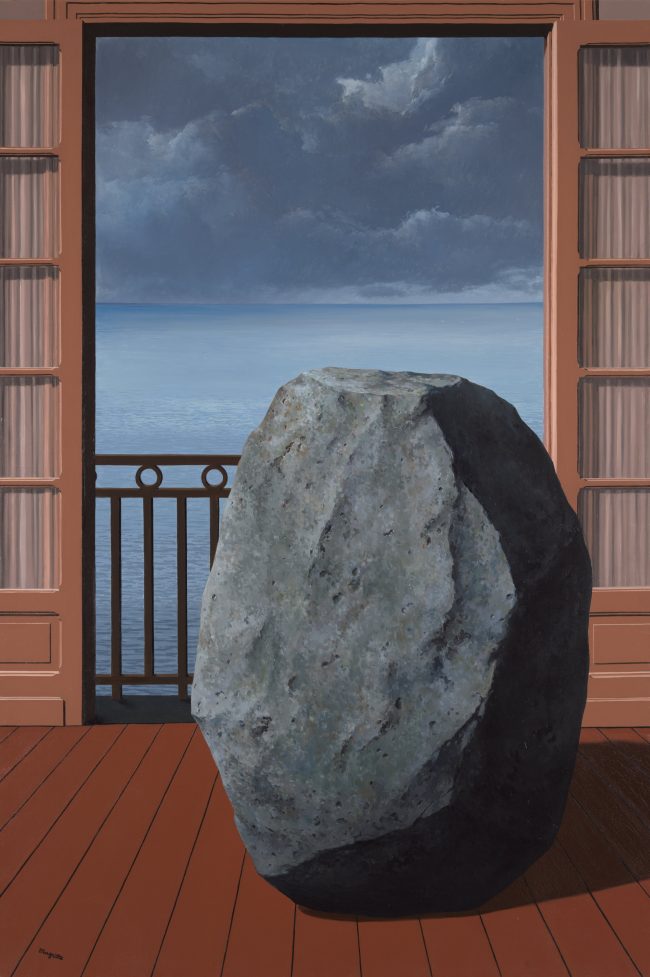
You can listen below to a recent interview with Senior Curator of Modern Art and Contemporary Art, and curator of this exhibition, Nicholas Chambers:
Share "Review: Magritte"
Copy








